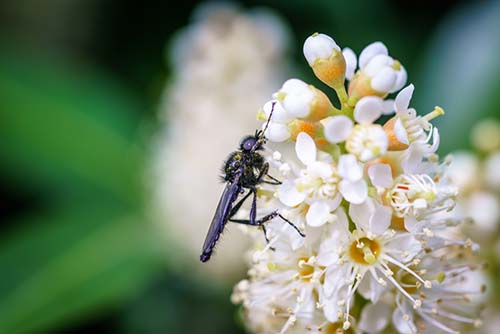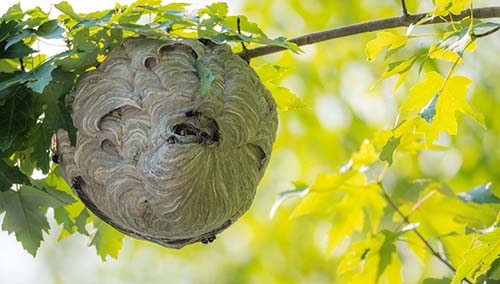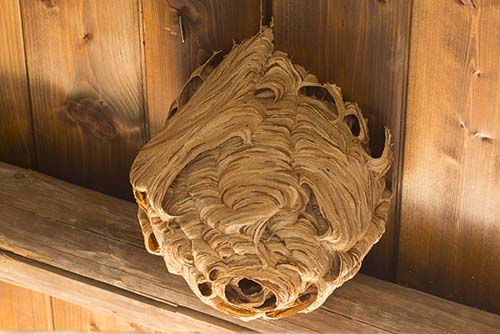
There are thousands of wasp species that can be found across the United States, including yellow jackets and mud daubers. Some wasps can be beneficial to gardens as they are pollinators and natural predators of pests that eat crops. Wasps can be solitary, meaning they live alone, or social, meaning they live in a group in a nest.
Homeowners need to be on the lookout for both solitary and social wasps. Not only do wasps sting, if they get inside a structure they can build a nest inside, which could damage the ceiling or walls.
Use this guide to find wasp nests in and around residential and commercial buildings. If you do have wasps, read our guide on how to get rid of wasps, yellow jackets, and hornets for treatment options.
Pro Tip
There is only one species of hornet that can be found in the United States - the European hornet. Like social wasps, European hornets also create and live in above ground nests. The same methods for finding and treating wasp nests can be used to find and treat a European hornet nest. See below for more information on finding a nest near your home.
What Do Wasp Nests Look Like?

Wasp nests vary depending on the species that makes them. Social wasps tend to make their nests above ground while solitary wasps mostly make their nests below ground.
Above ground nests tend to share the same characteristics:
- Gray or light tan in color
- Round or spherical in shape
- Has at least one entrance/exit hole
- Has combs on the inside that may or may not be visible
- Made of mud or a paper-like substance
Below ground nests are typically non-descriptive. The wasp will make combs beneath the ground, but only the hole in the ground that the wasp comes in and out of will be visible.
Where are Wasp Nests Found?

Wasps make their nests in areas that are generally not disturbed. Solitary wasps usually make nests below ground while social wasps make their nests above ground.
Above ground wasp and hornet nests can be found in the following places:
- In trees
- In bushes
- Beneath decks and patios
- Beneath the eaves of a house
- In a crack or crevice of a house or building
- Behind shutters
- On or near outdoor light fixtures
- On playgrounds
- On mailbox stands
- Inside unused grills
Below ground nests can be found in dirt, but also in the following areas:
- Beneath concrete or asphalt slabs, such as driveways or patios
- Under rocks
- Below fallen branches or logs
Once you know that you have a wasp or hornet nest, you will need to remove the nest and treat the area to prevent the pests from returning. Read our guide on how to get rid of wasps, yellow jackets, and hornets to learn how to safely and effectively remove these pests. Click the right arrow below to learn more.



